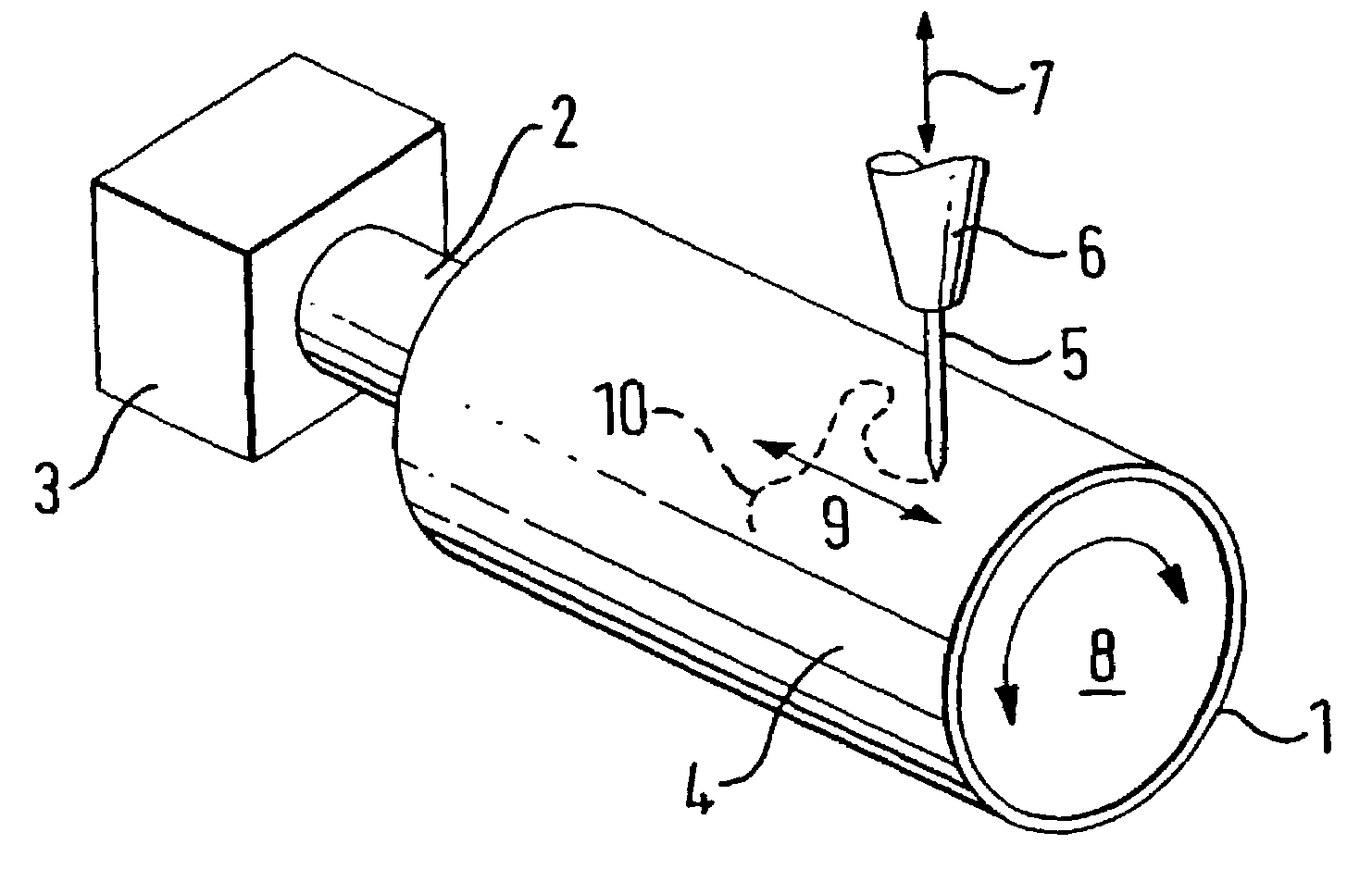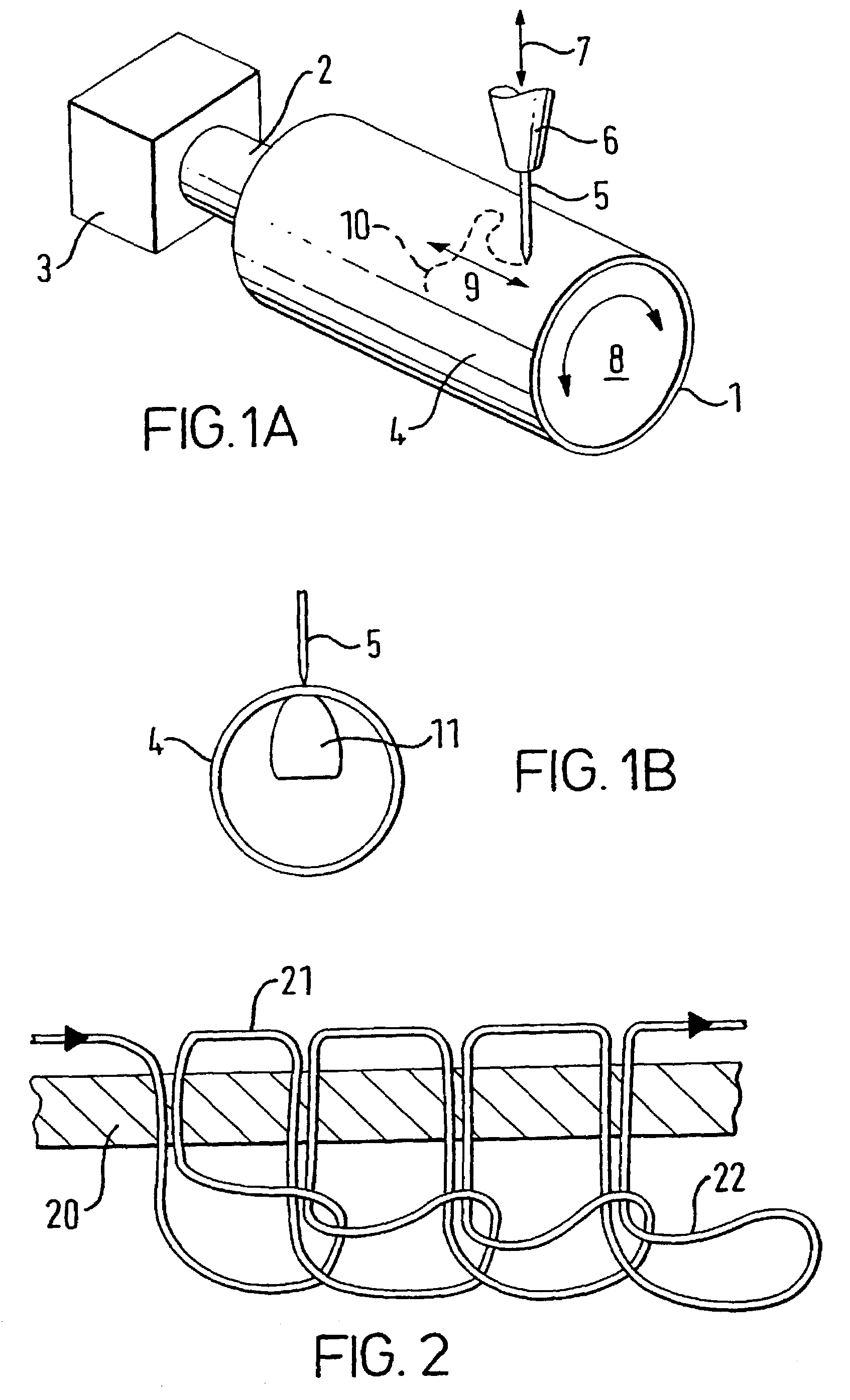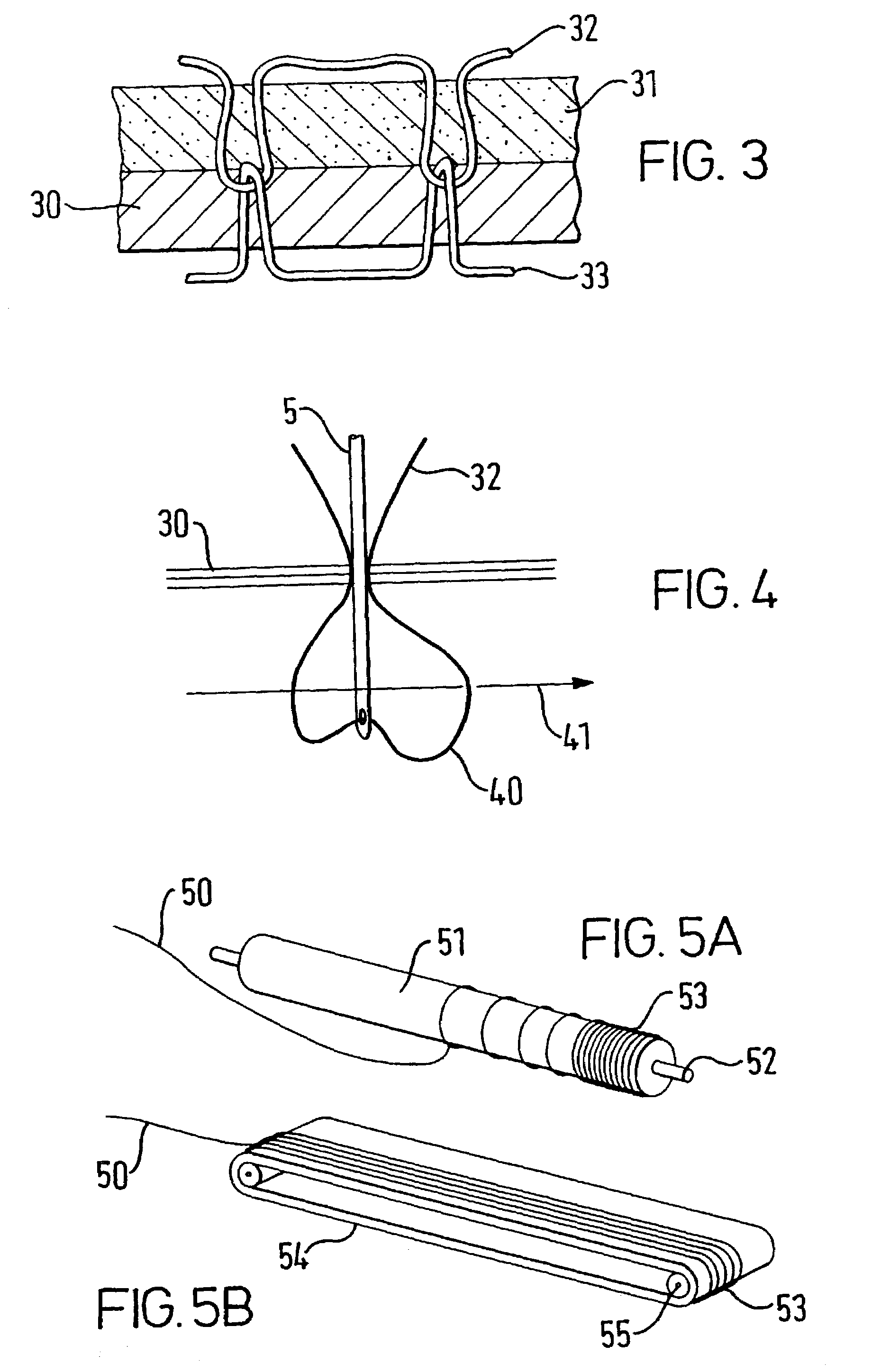Method for manufacturing a medical implant
a technology for medical implants and manufacturing methods, applied in applications, medical science, blood vessels, etc., can solve the problems of preventing the design of continuous structures, affecting the quality and cost of the final product, and the process can take a long tim
- Summary
- Abstract
- Description
- Claims
- Application Information
AI Technical Summary
Benefits of technology
Problems solved by technology
Method used
Image
Examples
Embodiment Construction
[0054]FIG. 1A shows a drum assembly 1 mounted on a rotor 2 which is driven by a drive assembly 3. A graft 4 is supported on drum assembly 1. Needle 5 is mounted on sewing machine head 6 above graft 4.
[0055]In operation, drive assembly 3 operates to rotate rotor 2, drum assembly 1 and graft 4 about the longitudinal axis of graft 4 as shown by arrow 8. Drive assembly 3 can also operate to translate graft 4 back and forth along its longitudinal axis as shown by arrow 9.
[0056]Sewing machine head 6 can be moved up and down relative to graft 4 as shown by arrow 7 by a drive system on the sewing machine (not shown). Thus a combination of these movements can be used to move needle 5 along the surface of graft 4 as shown by dotted line 10.
[0057]FIG. 1B shows an end-on view of the apparatus of FIG. 1A. Bobbin 11 can be seen inside graft 4 underneath needle 5. In operation, bobbin 11 can be moved back and forth along the longitudinal axis of graft 4 by a drive mechanism (not shown) in order to...
PUM
| Property | Measurement | Unit |
|---|---|---|
| diameter | aaaaa | aaaaa |
| diameter | aaaaa | aaaaa |
| diameter | aaaaa | aaaaa |
Abstract
Description
Claims
Application Information
 Login to View More
Login to View More - R&D
- Intellectual Property
- Life Sciences
- Materials
- Tech Scout
- Unparalleled Data Quality
- Higher Quality Content
- 60% Fewer Hallucinations
Browse by: Latest US Patents, China's latest patents, Technical Efficacy Thesaurus, Application Domain, Technology Topic, Popular Technical Reports.
© 2025 PatSnap. All rights reserved.Legal|Privacy policy|Modern Slavery Act Transparency Statement|Sitemap|About US| Contact US: help@patsnap.com



